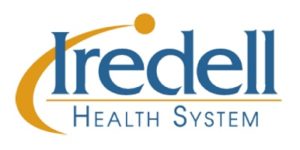
Special to Iredell Free News
You probably know that your brain, like all areas of your body, needs a constant supply of blood to keep it going. Delivering necessary nutrients and oxygen, your blood is essential to the survival of your entire body, from your toes to your brain. So, when something disrupts this blood flow, severe problems can occur.
One of these problems, a transient ischemic attack (TIA), can happen when your blood doesn’t reach part of your brain. Like a stroke, TIA often occurs when a blood clot blocks an artery.
However, unlike a stroke, the blockage lasts briefly and tends to resolve itself without causing permanent damage.
Though permanent brain damage is not caused, in some cases, TIA can be your body’s way of sending you a serious warning — one you should listen to.

“TIAs are often a warning sign that a person is at risk for more severe and debilitating stroke in the future,” said Diane Galati, stroke and chest pain coordinator at Iredell Health System.
You may have heard TIA called a “mini-stroke.” However, it is more accurately described as a warning stroke. About 1/3 of people who have TIAs will have a full-blown stroke in the future.
“Although this is dependent upon a multitude of factors, research has shown 12 percent of patients die within one year after having a TIA,” said Galati.
Start this month, National Stroke Awareness Month, by learning more about TIAs and the serious signal they send.
TIA Risk Factors
“The risk factors for TIAs are the same for strokes. There are controllable and uncontrollable risk factors,” said Galati.
Uncontrollable risk factors include:
• Age – The likelihood of having a stroke nearly doubles every 10 years after the age of 55.
• Family history – Your risk increases if the family member had a stroke before the age of 65.
• History of prior stroke, TIA, or heart attack – A history of these increases your risk 10 times.
• Ethnicity – African Americans have a higher risk of death from stroke due to an increased risk of high blood pressure and diabetes.
• Gender – Women have more strokes than men and with a greater incidence of death.
While you cannot change the factors above, there are factors you can modify to lower your risk for TIA and stroke.
These controllable risk factors include high blood pressure, smoking, diabetes, physical inactivity, excess weight, poor nutrition, heavy drinking, high cholesterol, sickle cell disease, and cardiovascular disease.
If you have any of these risk factors, it’s important to work with your primary care provider to make lifestyle changes and treat medical conditions that could be putting you on the path to TIA and stroke.
TIA Symptoms
The word “transient” is defined as only lasting a short time, and symptoms of a transient ischemic attack are short-lived, normally disappearing within an hour.
Symptoms of TIA come on suddenly and mirror those of a major stroke. According to Galati, these symptoms include:
• Numbness or weakness of the face, arm or leg, especially on one side of the body.
• Slurred speech.
• Difficulty talking or understanding others.
• Trouble seeing in one or both eyes.
• Trouble walking, dizziness, or loss of balance or coordination.
• Severe headache of unknown cause.
Since symptoms of TIA are not permanent, they often go ignored. But, when your body sends you a warning, it’s up to you to recognize and do something about it. Strokes can happen within days or months of a TIA.
“Any stroke symptoms, no matter how short-lived, should be treated as an emergency. Treatment can prevent a full-scale stroke,” said Galati.
TIA Prevention
“For TIA prevention, it’s important to work on controlling the risk factors you can,” said Galati.
Many controllable risk factors for stroke can be reduced by choosing a healthy lifestyle and managing medical conditions.
To reduce your risk, Galati recommends:
• Choosing a healthy diet – Aim to eat five or more servings of fruits and vegetables daily and eat a balanced diet.
• Quitting smoking – If you’re having trouble quitting, join a smoking cessation program.
• Limiting alcohol – Avoid or limit alcohol consumption.
• Managing weight – Losing as little as 5-10 pounds can reduce your risk.
• Exercising – Exercise at least 30 minutes a day, 4 to 5 days per week. Walking is an excellent way to start.
• Treating medical conditions – Make sure to get treatment if you have medical conditions such as heart problems, artery disease, diabetes, or blood disorders.
Seek Medical Attention
“People often deny TIA symptoms and even wait to see if the symptoms will go away. But TIA symptoms should not be taken lightly,” said Galati.
If you or someone you know is having TIA or stroke-like symptoms, even if they pass, seek medical attention immediately. It’s best to be evaluated within 60 minutes from the time your symptoms started, as it is necessary to identify the cause of the symptoms.
“Depending on the patient’s medical history and the results of a medical examination, the doctor may recommend drug therapy or surgery to reduce the risk of stroke in people who have had TIA. The use of antiplatelet agents, particularly aspirin, is a standard treatment for patients at risk for stroke,” she said.
Make healthy changes in your life today to help prevent you from stroke and TIA later on. And, remember, take any stroke-like symptom seriously and do not be reluctant to report your symptoms — it can save your life.
Iredell Memorial Hospital is a certified Primary Stroke Center and is recognized by the American Heart Association and the American Stroke Association as a Stroke Gold Plus Quality Achievement award recipient. The hospital emergency department also has a telestroke robot nicknamed TESS (Treat & Evaluate Stroke Symptoms) that provides 24/7 access to expert stroke care.
About Iredell Health System
Iredell Health System includes Iredell Memorial Hospital; Iredell Mooresville; Iredell Home Health; Iredell Wound Care & Hyperbaric Center; Community and Corporate Wellness; Occupational Medicine; the Iredell Physician Network and more. Iredell Memorial Hospital is the largest and only nonprofit hospital in Iredell County. The comprehensive healthcare facility has 247 beds; more than 1,700 employees; and has 260 physicians representing various specialties. Centers of excellence include Women’s and Children’s; Cardiovascular; Cancer; Surgical Services and Wellness & Prevention. The Health System’s newest campus, Iredell Mooresville, is home to the area’s only 24-hour urgent care facility, as well as an ambulatory surgery center, imaging center, rehabilitation services, and physician practices. The mission of Iredell Health System is to inspire wellbeing. For a comprehensive list of services and programs, visit www.iredellhealth.org.



